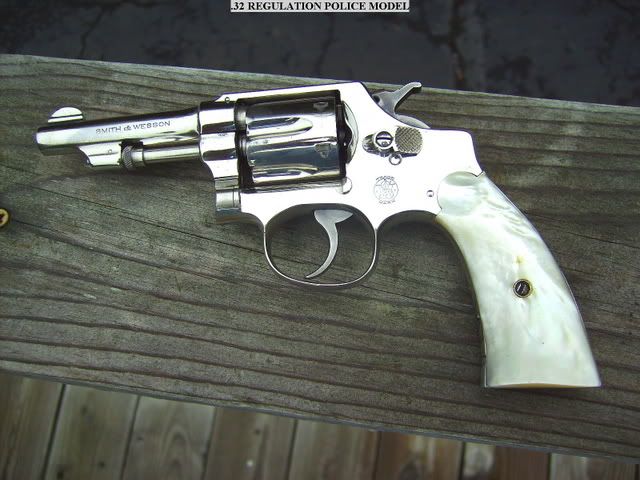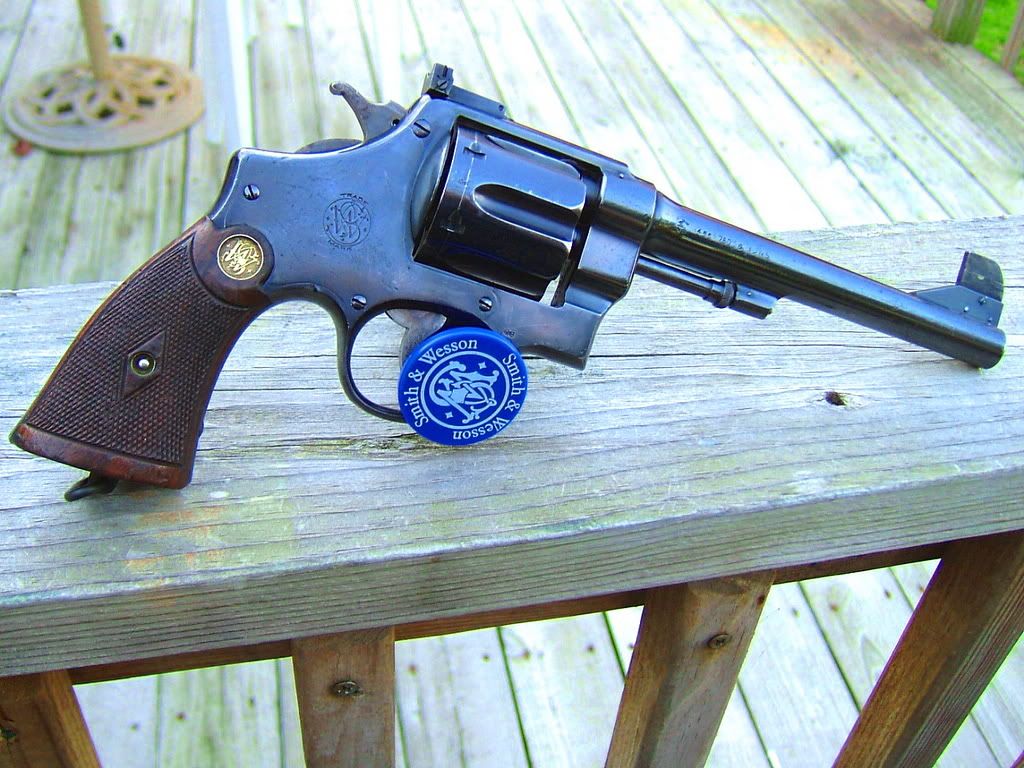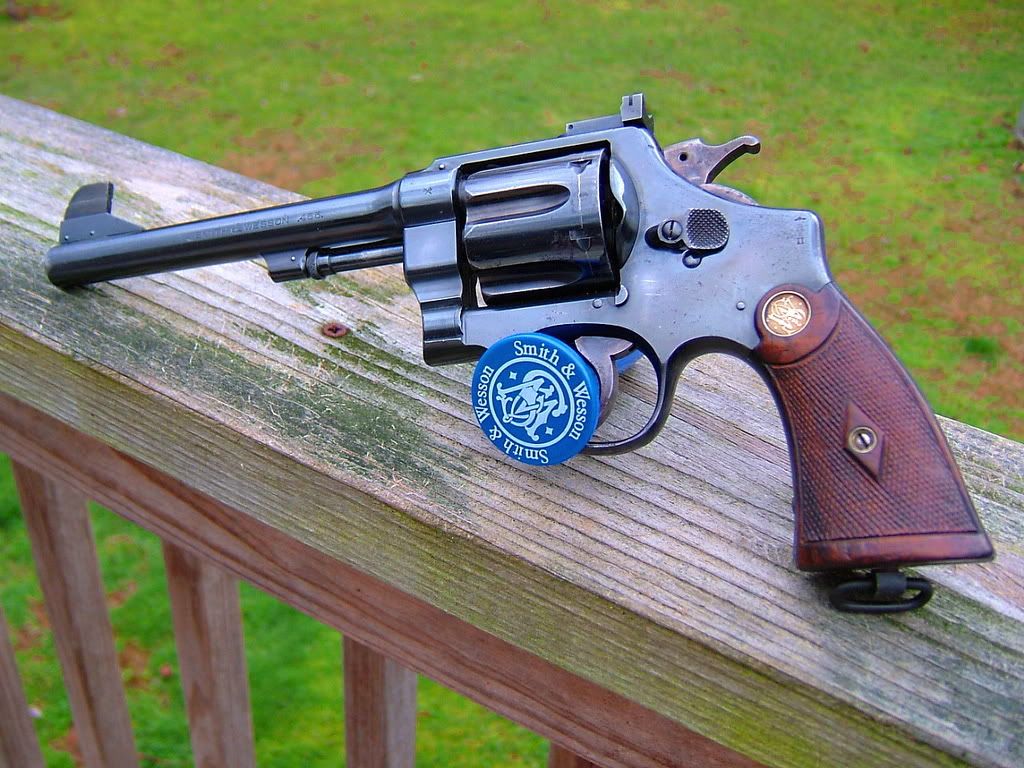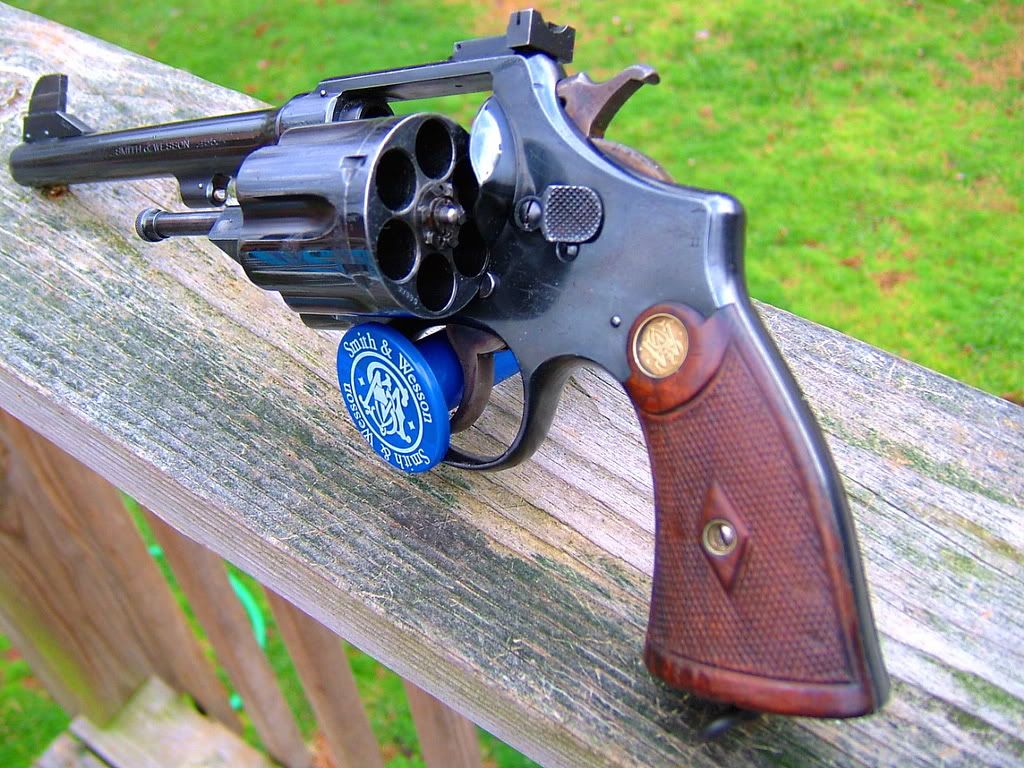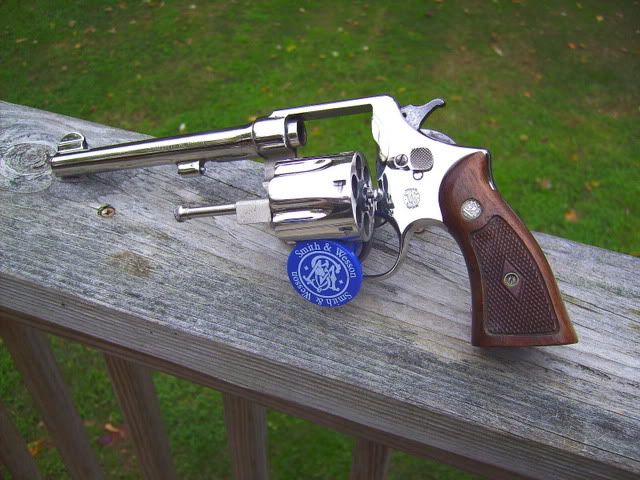Finding out a Revolver's History path is fun and Interesting
Hello
I have Taken a deep Interest in Tracking a revolver's roots if at all Possible on these Older Pre-War revolvers. So Far Two out of Three has netted me some very Neat information. To start with the Nickel finish S&W RegulationPolice was kind of Easy to Trace. It came to me with the side Plate engraved in taht it's owner was a Chief of Police for The Evansville, Indiana Police Department back in 1927. I Later found out that this revolver indeed shipped directly to the Evansville, Indiana Police Department in December 1926 and apparently was a gift for the newly elected police Chief Harry Anderson upon him taking the Elected Position. It has an odd 3-1/4" Barrel Length, and Later I found the reason for this was
Chief Anderson was in charge of a
Motor Cycle Brigade Back then, as an experiment for the Evansville, Indiana Police Department. I E-mailed the Evansville, Indiana Police Department and asked Sergeant Hubbard what he could tell me about The Previous Chief Harry Anderson and he Promptly E-mailed me back with the copy and Paste Version reply below. he also sent me a very nice Evansville, Police Uniform Patch and Tie Tack shown as well. I hope you enjoy the History roots of this Daily Carry revolver the Chief had back then, and here are the Two responses I received from Sergeant Hubbard.
Here is the historical information on Harry Anderson with the Evansville Police Department. He served as Chief from 1926 to 1928.
If I can be of any other assistance, please let me know.
Sgt.Richard Hubbard
In March 1926, Nolte was hospitalized with a nervous breakdown and voluntarily took a demotion to detective, stepping down as chief in favor of Harry Anderson on March 29, 1926. Nolte continued as a member of the department until his retirement in 1931. Nolte died in 1933. Nolte's 3-month term as chief was the shortest in the history of the police department.
Harry Anderson
Harry Anderson, the 23rd chief of police, was born in Warrick County. He became active in the Republican Party. He joined the department on November 24, 1916. Prior to joining the department, Anderson worked as a bartender. He was promoted to motorcycleman on January 7, 1918. Anderson was a member of the Evansville Police Relief Association committee that published the book "A Souvenir History of the Evansville Police Department" in 1918.
In 1919, Anderson resigned and became a car salesman. In January 1921, County Clerk Frank Grange appointed Anderson a deputy in the county clerk's office. When the Republicans took control of city hall in January 1926 Mayor Herbert Males appointed William Nolte as his choice to replace Democrat-appointed Ira Wiltshire in the chief's position. After 3 months in the chief's office, Nolte suffered a nervous breakdown and took a voluntary demotion to detective. Anderson returned to the police department after an absence of 7 years as Mayor Males's choice to replace Nolte in the chief's position.
Anderson remained Chief of Police for 33 months. The City Council launched impeachment proceedings against Chief Anderson, License Inspector Benjamin Bartlett, and members of the Board of Public Safety in September 1928. In the 1928 county elections, he was elected county clerk. In late December 1928, Anderson submitted his resignation as chief. The text of Chief Anderson's letter of resignation read as follows:
"Honorable Herbert Males and Board of Safety. Having been elected Clerk of the Vanderburgh Circuit Court the past election and as this term of office begins January first, I hereby tender my resignation as superintendent of the police department to take effect January 1, 1929."
Chief of Detectives Edward Sutheimer was appointed to fill the chief's position for the remaining year of Mayor Males' administration.
This should help you out some more.
When Anderson resigned, he had served a total of 6 years as a member of the police department. The department's 8-year experiment with a mounted patrol began in 1927 during Chief Anderson's administration. Anderson ran for county clerk again in the election of 1932. The Roosevelt-Democratic landslide of 1932 buried Anderson, like his fellow Republicans. After losing the election, he returned to the trade that he had practiced before joining the police department in 1916, working as a bartender. In 1935, Anderson became a milkman. Later in life, he bought a dairy farm in Warrick County. After failing to make that enterprise profitable, he sold it. Anderson then moved back to Evansville, living at 209 First Avenue. He was appointed a Vanderburgh County deputy sheriff. He served as a guard at the Evansville Waterworks during World War II. In 1945 he moved to 26 East Chandler. He died on December 12, 1946. His wife’s name was Bertha and he had one brother whom lived in California.
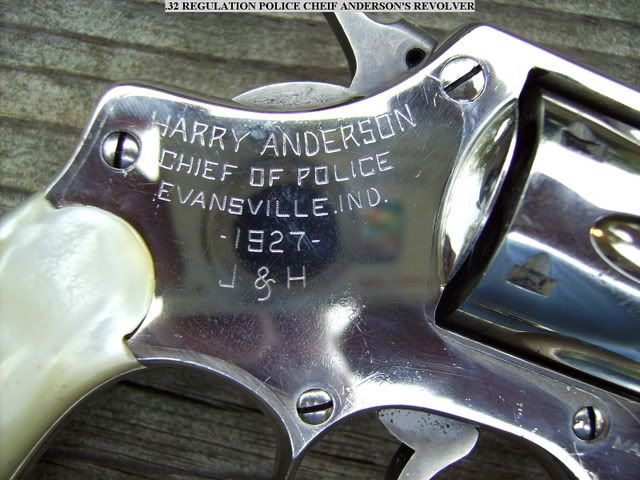
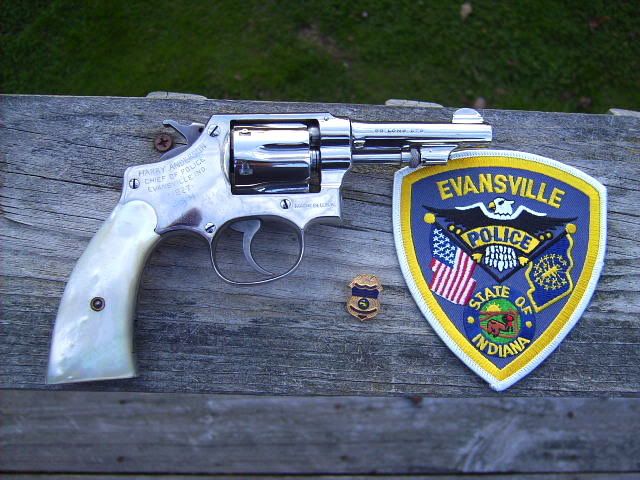
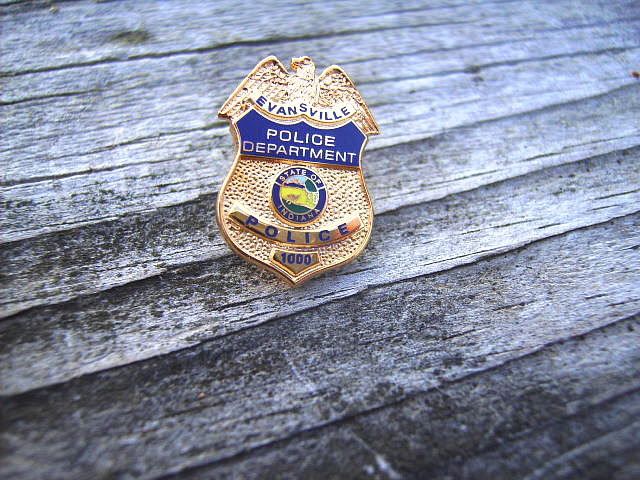
The second Pre-War revolver I have started a History Trace is on my .455 Mark II. I contacted the Ower before me, and asked him to Please go back and see if he could find anything out about it's History Path, as I had discovered it had a Proof Mark that meant it was Non Government Property and this could only mean the guy that had carried the weapon to War took it home. I was delighted to learn this revolver was one of the smaller Quantities that got exported to Canada for the R.C.A.F. Back in 1916. Below you will see a copy and Paste version of the pprevious owners findings about this revolver. After I learned this, I looked into the History of the R.C.A.F. and discovered it was short Lived back in World War I as only Two years. Apparently England did not want to import Canadians to fight her War so the R.C.A.F. was abandoned. It amazes me, that this revolver did service in that short time span and was kept by the Pilot that trusted his Life with it. I further amazed me to sit here thinking back in that time span Pilots had nothing but a Tarp covered Plain to fly Bi-Plane at that with Zero protection compared to today's fighter Jet's. I hope you find this as Interesting as I did, and one never knows who or where an old Revolver may have been or done in it's History path unless it is researched. Regards, Hammer It.
Hello
I went back to the dealer I got that big .455 from in an effort to come up with more history if possible.Everything he told me isn't written in stone as he got the history passed down from the family he bought it from.Having said that I will add that he is the dealer of choice up here for estate buys because he's fair and honest. He told me that your old Smith was indeed a Canadian revolver from the WW 1 era. All else he could say was that he had gotten it from a family who was very private, but who had a son in New Hampshire who joined the RCAF in the first days of War One and was in Canada for pilot training. He was issued the pistol there and spent some time in France before the end of the war. Apparently he went in the RCAF early in the war
but this was the second revolver he was issued and it was converted, unlike his first
which was truly a 455, to .45 Colt after it was issued at Smith & Wesson by the pilot's family who were afraid that he would have trouble with what they felt was the Anemic .455 Webley round. I asked the dealer if he could fix it to let me speak with the family and he said he wouldn't promise but he would try. He did tell me that he was willing to sell me the revolver at exactly what he paid the family for it, both because I was a customer and because they expressed a wish that the old Smith get in the hands of someone who would appreciate it. I assured him that the new owner was a man who already appreciated it. If I get anything more I'll email you. Looks to me as if that Smith has come full circle from a warrior to another warrior who respects what he has.
Use it in good fortune.



